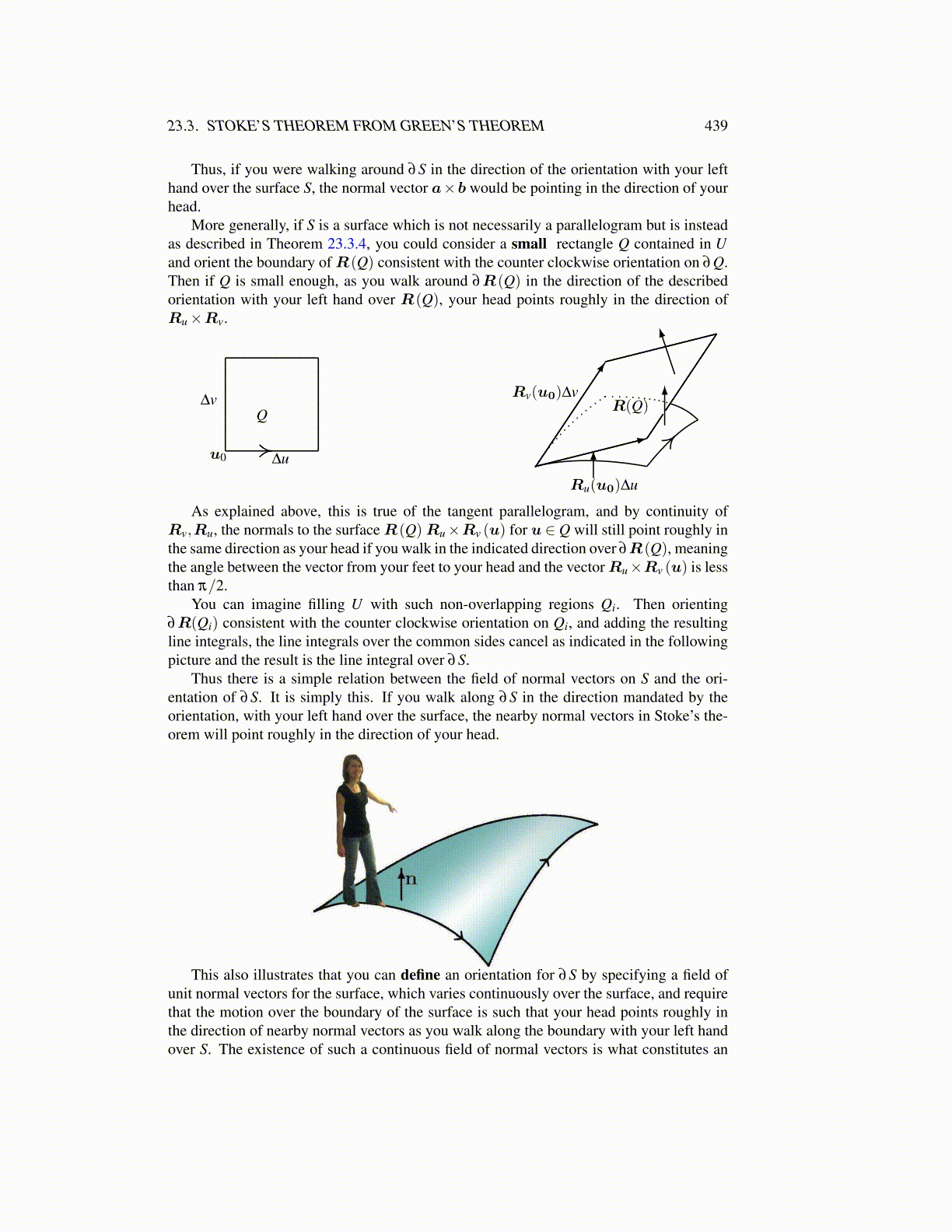
23.3. STOKE’S THEOREM FROM GREEN’S THEOREM 439
Thus, if you were walking around ∂S in the direction of the orientation with your lefthand over the surface S, the normal vector a×b would be pointing in the direction of yourhead.
More generally, if S is a surface which is not necessarily a parallelogram but is insteadas described in Theorem 23.3.4, you could consider a small rectangle Q contained in Uand orient the boundary of R(Q) consistent with the counter clockwise orientation on ∂Q.Then if Q is small enough, as you walk around ∂R(Q) in the direction of the describedorientation with your left hand over R(Q), your head points roughly in the direction ofRu×Rv.
Q
u0
∆v
∆u
Rv(u0)∆v
Ru(u0)∆u
R(Q)
As explained above, this is true of the tangent parallelogram, and by continuity ofRv,Ru, the normals to the surface R(Q)Ru×Rv (u) for u ∈ Q will still point roughly inthe same direction as your head if you walk in the indicated direction over ∂R(Q), meaningthe angle between the vector from your feet to your head and the vector Ru×Rv (u) is lessthan π/2.
You can imagine filling U with such non-overlapping regions Qi. Then orienting∂R(Qi) consistent with the counter clockwise orientation on Qi, and adding the resultingline integrals, the line integrals over the common sides cancel as indicated in the followingpicture and the result is the line integral over ∂S.
Thus there is a simple relation between the field of normal vectors on S and the ori-entation of ∂S. It is simply this. If you walk along ∂S in the direction mandated by theorientation, with your left hand over the surface, the nearby normal vectors in Stoke’s the-orem will point roughly in the direction of your head.
This also illustrates that you can define an orientation for ∂S by specifying a field ofunit normal vectors for the surface, which varies continuously over the surface, and requirethat the motion over the boundary of the surface is such that your head points roughly inthe direction of nearby normal vectors as you walk along the boundary with your left handover S. The existence of such a continuous field of normal vectors is what constitutes an